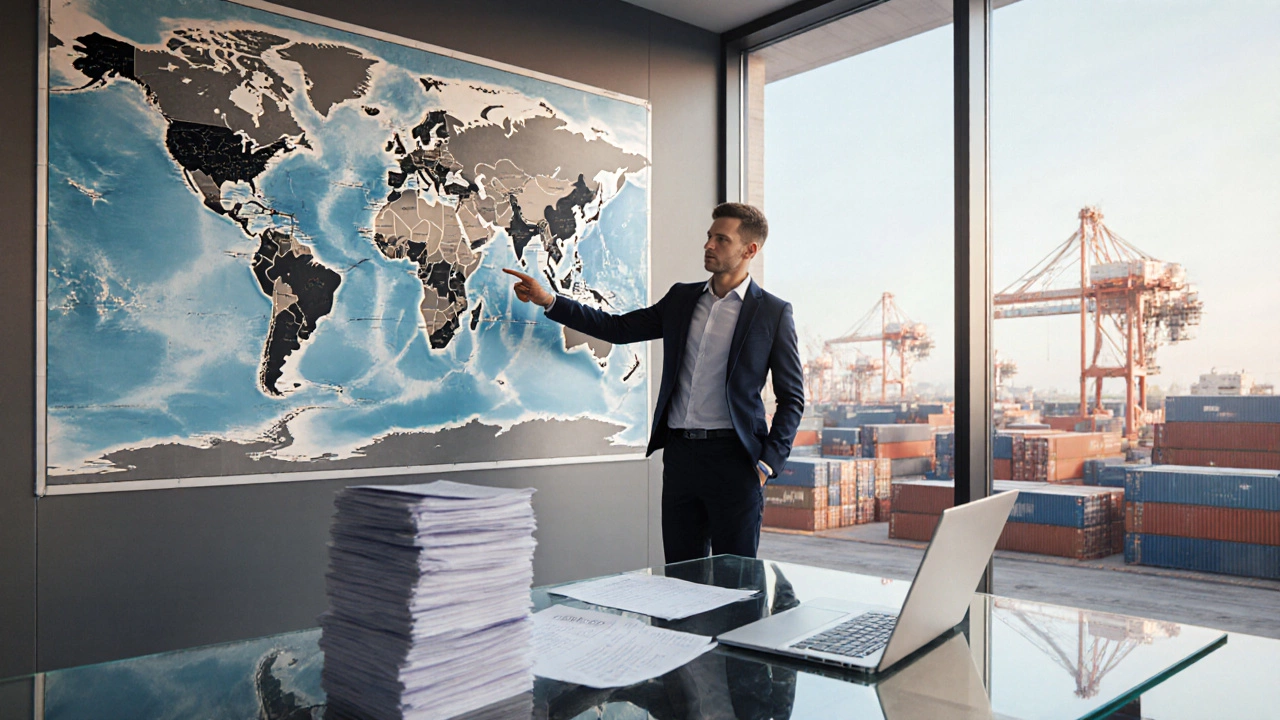What Does a Freight Forwarder Do? Explained in Simple Terms
Learn what a freight forwarder does, the services they provide, the step‑by‑step process, and how to choose the right partner for seamless international shipping.
When working with Freight Forwarding Services, a set of logistics activities that move goods between origin and destination by handling documentation, customs, and transport coordination, you’re tapping into a crucial link between manufacturers and customers. Also known as freight forwarding, it bridges the gap between raw cargo and delivered product. Freight forwarding services don’t own the trucks or ships; instead, they orchestrate the entire journey, choosing carriers, negotiating rates, and ensuring paperwork is spot‑on.
This ecosystem leans heavily on Logistics, the planning, execution, and control of movement and storage of goods. Good logistics means the right container at the right port, the right paperwork ready for customs, and the right timing to avoid demurrage. Speaking of customs, Customs Clearance, the process of preparing and submitting documents to government authorities to allow goods to cross borders is a non‑negotiable step – a single mistake can delay a shipment for days. The broader picture is the Supply Chain, the network of organizations, people, activities, information, and resources involved in moving a product from supplier to customer. Freight forwarding services sit inside this network, influencing inventory levels, production schedules, and ultimately, customer satisfaction.
First, a forwarder evaluates the cargo type – whether it’s hazardous material, oversized equipment, or temperature‑sensitive goods. Each category triggers specific handling rules and packaging standards. Second, the forwarder selects the optimal mode of transport – sea, air, rail, or road – based on cost, speed, and destination infrastructure. Third, they manage documentation: commercial invoices, packing lists, certificates of origin, and any permits required for special goods. Fourth, they arrange insurance to protect against loss or damage during transit. Finally, they provide real‑time tracking, updating the shipper on location, estimated arrival, and any unexpected delays.
Because freight forwarding services involve many moving parts, they require strong coordination skills and deep knowledge of international regulations. For example, the Incoterms® rules dictate who pays for freight, insurance, and customs duties. A forwarder who understands these terms can advise shippers on the most cost‑effective responsibility split. Moreover, technology plays a growing role; transportation management systems (TMS) help forwarders plot routes, compare carrier rates, and automate paperwork. The result is faster quote generation, fewer errors, and better visibility for all parties.
In practice, companies that partner with experienced freight forwarders see reduced shipping costs, fewer customs holds, and smoother delivery timelines. Whether you ship a single motorcycle from Chennai to Delhi or manage a continuous flow of raw materials for a factory, the principles remain the same: accurate data, reliable partners, and proactive problem solving. Below you’ll find a curated collection of articles that dive deeper into each aspect – from choosing the right logistics software to understanding how freight forwarding fits into the larger supply chain. Explore the posts to sharpen your knowledge and apply proven tactics to your own shipping challenges.

Learn what a freight forwarder does, the services they provide, the step‑by‑step process, and how to choose the right partner for seamless international shipping.